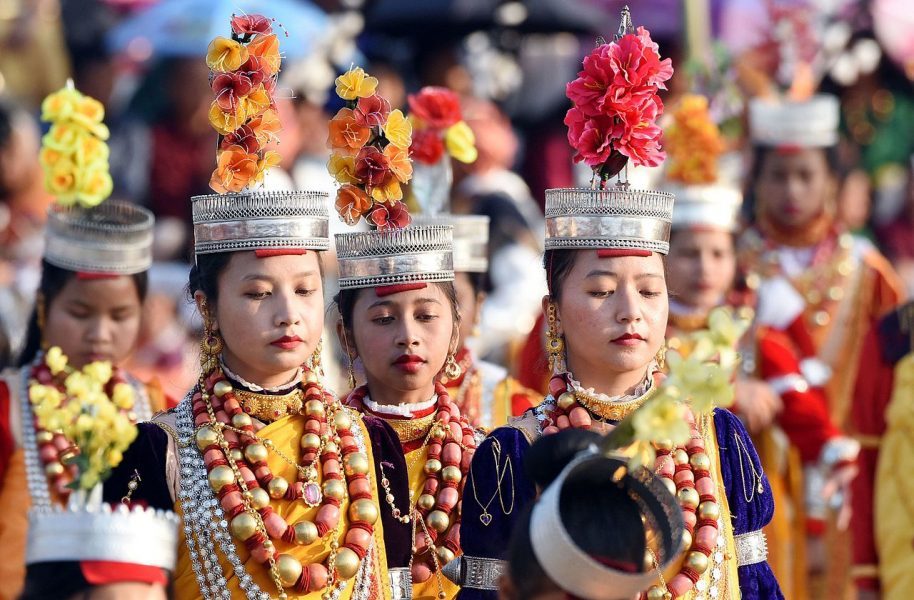Govt spent a paltry ₹264 crores for five years to keep India's folk arts alive
The folk arts in the country continue to get short shrift from the government despite lofty claims of protecting Indian 'culture' by the ruling dispensation. Official reports reveal that the Ministry of Culture has given financial aid to the tune of a paltry ₹264.70 crores in the past five years to promote and preserve various folk arts, including folk dance and music throughout the country
;
The folk arts in the country, which is fast disappearing for lack of patronage and funds, continue to get short shrift from the government despite lofty claims of protecting Indian ‘culture’ by the ruling dispensation. Official reports reveal that the Ministry of Culture has given financial aid to the tune of a paltry ₹264.70 crores in the past five years to promote and preserve various folk arts, including folk dance and music throughout the country.
This announcement was made by G Kishan Reddy, the minister of culture, tourism and development of north-eastern region in the Lok Sabha on Monday (December 6). He added that this amount has been disbursed through the seven Zonal Cultural Centres (ZCCs) spread across the country, which utilises this annual grant-in-aid awarded by the government to organise several programmes and activities on folk art.
The statement on the government’s efforts to preserve and promote various folk arts of the country like folk dance etc., was provided in response to a question posed by the Bollywood actor and BJP MP Hema Malini. Besides requesting details on the kind of schemes implemented for promoting folk arts, Hema Malini also asked for a break-down on the expenditure incurred under these schemes in the last five years.
Also read: Folk to film: How the true Tamil heart is in sync with music
According to the Ministry of Culture’s statement, the Centre has set up seven Zonal Cultural Centres (ZCCs) to promote various forms of folk art and culture including folk dance and music throughout the country. These ZCCs organise various cultural activities and programmes on a regular basis in the country for which annual grant-in-aid is provided to them. The grant-in-aid provided to these ZCCs during the last five years is as follows:
The Centre has spent the maximum to encourage the folk arts in 2016-17 by granting aid to the tune of ₹60.85 crores, and this amount has steadily dropped to ₹40 crores in 2020-21.
The ZCCs also encourage traditional folk arts through a number of schemes such as awards for young talented artists, the guru shishya pararampara, theatre rejuvenation, research & documentation, Shilpgram, Octave and the National Cultural Exchange Programme. Under the “Young Talented Artists” scheme, young people especially in the field of rare art forms are given a one-time cash award of ₹10,000, while in the guru shishya pararampara programme has disciples are trained by veterans in rare and disappearing art forms.
Rare and vanishing art forms of the region are identified and eminent exponents are selected to carry out the training programmes in ‘Gurukula’ tradition. The monthly remuneration for guru is ₹7,500, an accompanist gets ₹3,750 and pupils get ₹1,500 each for the period of six month to maximum 1 year for one scheme. The names of the gurus are recommended by the state culture departments.
Under the Octave scheme, folk arts from the rich cultural heritage of north-east region are promoted. Shilpgram meanwhile fosters folk and tribal art and crafts of the zone by organising seminars, workshops, exhibitions, craft fairs, design development and marketing support to the artisans living in the rural areas.The details of expenditure incurred by all the ZCCs under these schemes during the last five (5) years are as under:
The financial assistance to the north-east to keep their folk art alive and robust has significantly dropped from ₹4 crores to ₹5 crores in 2016-17 to a meagre ₹11 lakhs in 2020-21. The Ministry of Culture also provides financial assistance schemes to encourage national and regional cultures, which also involves folk art, said the statement. This aid ranges from repertory grants to preservation and development of cultural heritage of the Himalayas, building grants including studio theatres, scheme for financial assistance for Tagore Cultural Complexes etc.
